Rainbow Moonstone
Rainbow Moonstone is a gorgeous Feldspar based mineral, with a lovely flash of colour. It is usually used for jewellery, or polished into display items.
It should not be confused with Moonstone – which does not have a rainbow colour flash but a slightly different optical effect.
Showing all 8 results
-
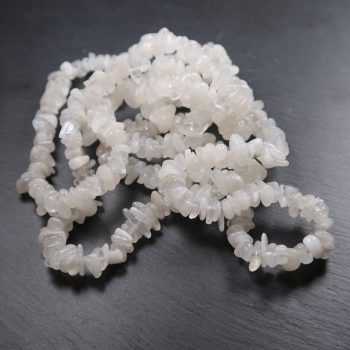
Rainbow Moonstone bead strands
£2.00 -
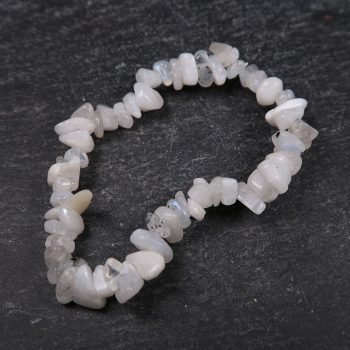
Rainbow Moonstone bracelets
£1.95 -
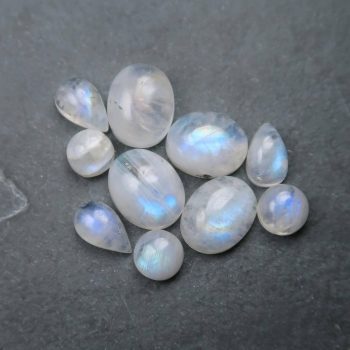
Rainbow Moonstone Cabochons
Price range: £2.50 through £10.00 -
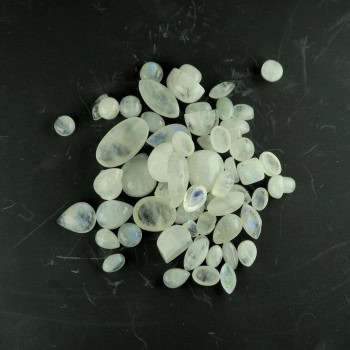
Rainbow Moonstone Cabochons (Parcels)
Price range: £5.00 through £10.00 -
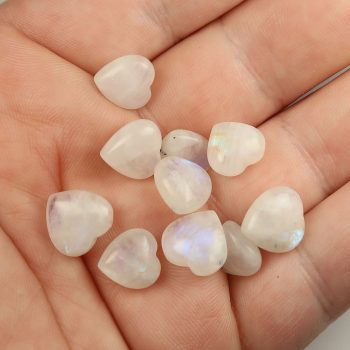
Rainbow Moonstone heart carvings
£10.00 -
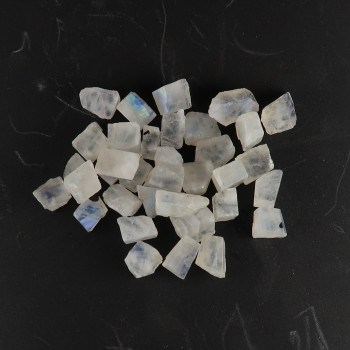
Rainbow Moonstone Specimens / Rough
Price range: £1.50 through £2.50 -
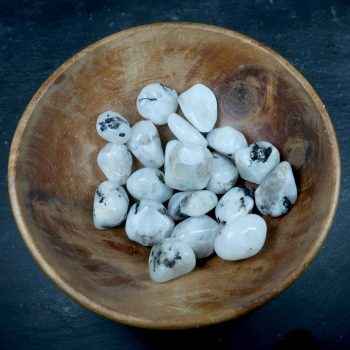
Rainbow Moonstone Tumblestones
Price range: £1.25 through £3.00 -
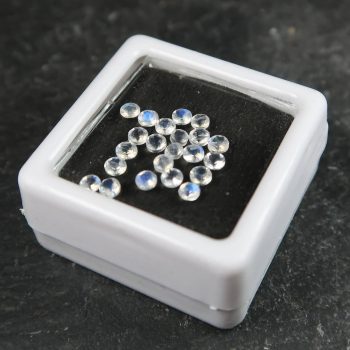
Rainbow Moonstone, Faceted
£4.00
Moonstone or Rainbow Moonstone?
This stone is often confused with Moonstone, due to the similar names; people believe the stones are related, but they are not.
Moonstone is a form of Orthoclase (Potassium Feldspar), whereas Rainbow Moonstone is closer to Labradorite (Plagioclase Feldspar) – albeit a white variety.
The name does cause some confusion, and to make matters worse, many unscrupulous sellers sell the glass “Opalite” as either Moonstone or Rainbow Moonstone, although it is easy to tell the difference with a little experience.
Typically the rainbow variant is mostly clear or white and has a blue flash of colour, but other colours do exist – gold is probably the second most common.
Appearance, Uses and History
Rainbow Moonstone typically exhibits a blue or multicoloured adularescence, or ‘flash of colour’, over a white body, often with black marks or inclusions.
Rainbow Moonstone is very often heavily cracked and included; however, this is at least partly the reason for its bright flash of colour.
Due to the name, it is often difficult to distinguish whether people are talking about true Moonstone or ‘rainbow Moonstone’.
Rainbow Moonstone is typically only used for jewellery making or as mineral specimens.
There are many historical references to Moonstone, but whether or not these refer to a feldspar or another unrelated mineral is simply a matter for debate.
Locales
Not the most common mineral – the two biggest sources for this material are India and Sri Lanka. However, deposits have been found in Brazil, India, Madagascar, Burma, and Tanzania.
Mineralogy
Hazards and Warnings
Almost all rocks, minerals (and, frankly, almost all other substances on earth) can produce toxic dust when cutting, which can cause serious respiratory conditions including silicosis.
When cutting or polishing rocks, minerals, shells, etc, all work should be done wet to minimise the dust, and a suitable respirator or extraction system should be used.
Translations
As a trade name, Rainbow Moonstone likely does not translate well into other languages.
Arabic:
- قوس قزح حجر القمر
Hindi:
Portuguese:
- pedra da lua do arco-íris
Bengali:
Indonesian:
- batu bulan pelangi
Punjabi:
English:
- rainbow moonstone
- white labradorite
Italian:
- pietra di luna arcobaleno
Russian:
- радуга лунный камень
French:
- pierre de lune arc-en-ciel
Japanese:
- レインボームーンストーン
Spanish:
- piedra de luna arcoiris
German:
- Regenbogen Mondstein
Korean:
- 무지개 월장석
Thai:
- มูนสโตนสีรุ้ง
Gujurati:
Mandarin and Traditional Chinese:
- 彩虹月光石
Urdu:
